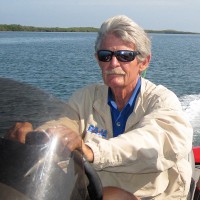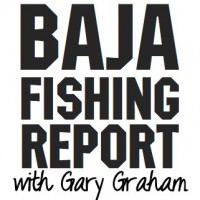
Only a handful of boats are fishing around the Coronados as the offshore continues to be the draw. The weather side of North Island is producing bonito and a few yellowtail for the patient anglers.
The Islands are near the edge of the clean offshore water, which has made a big difference in whether the yellowtail have decided to show and bite here. Another major factor has been current—you need it moving along at a decent clip to have a shot at a yellow.
A few boats wandered way down to 480 / 295 / 238 area and found some decent kelp paddy fishing. The kelp that are holding not only have yellowtail, but they also have a few skipjack and a handful of yellowfin.
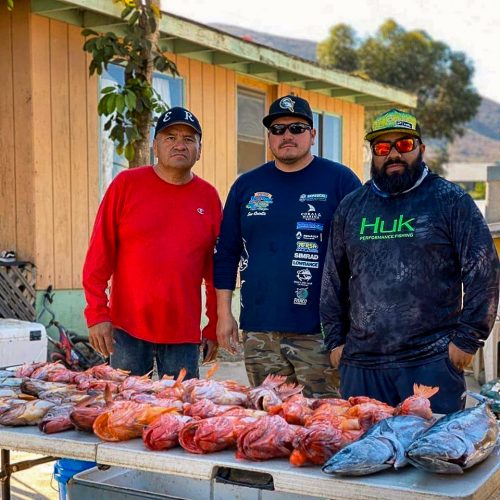
There has been some offshore wind to deal with at Ensenada recently, but it hasn’t had much effect on the consistent bottom fishing, plus the steady pick on yellowtail, bonito, and barracuda.
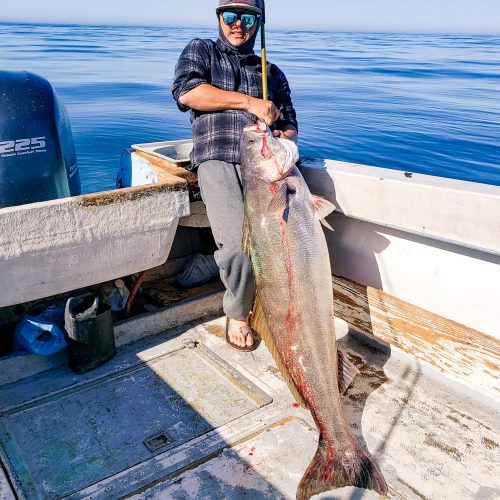
San Quintín has been experiencing one of its best white seabass bites in recent memory with some bucket list trophy-sized fish coming over the rail. Although taking a back seat to the WSB bite, the mainstay calico bass and yellowtail are still a factor.
Down at Asunción, the exotics have arrived! Both locals and visitors alike do battle with the yellowfin tuna and wahoo that have been added to the fall mix.
Out at Cedros Island, the yellowtail bite in the 30- to 35-pound class goes on along with calico bass and a few dorado added to the fall mix—biting on both bait and a variety of plastics.
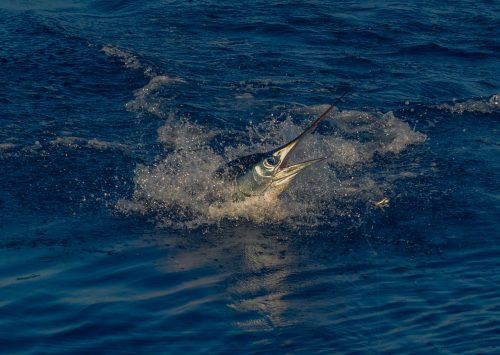
The Magdalena Bay offshore season arrived, and the stories of extraordinary fishing abound. Captain Peter Groesbeck cruised past there last week and had the best wahoo stop ever, catching over 20 wahoo, following a quadruple on marauder lures. He added that the striped marlin were thick, though mostly smaller—less than 70 pounds.
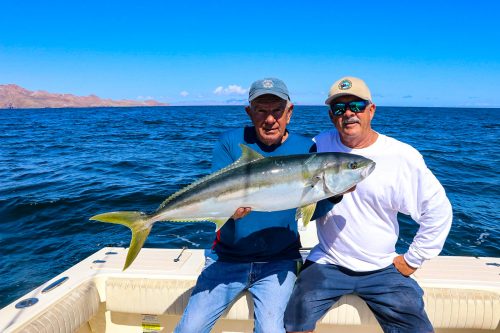
On the Sea of Cortez side, the north winds have begun. Up at Bahía de Los Ángeles, there are still a few “hangers-on” dorado in addition to the excellent yellowtail, grouper, cabrilla, red snapper, and cabrilla bite. How much longer that bite will last as winter closes in remains to be seen.
Both Gonzaga Bay and Santa Rosalía report similar actions with more bottom fishing than surface action.
Loreto is beginning to feel the winter coming with temperatures cooling, and the seasonal north winds starting to be a factor part of the time.
According to locals, this is the time of year when there is the possibility of mixing it up with some bigger dorado. From Agua Verde to Danzante, there have been some 20-pound class dorado hitting slow-trolled sardina on light line. Any line heavier than 30# test didn’t “get bit.” People working with 60# had only a few breakoffs. That might suggest larger dorado; however, nothing over 25# was landed.
At Punta Colorado, anglers were greeted with cooler temperatures and a taste of the soon-to-be north winds that only visited a few days each week. Although the water is still warm and there were a few 20-pound cabrilla along with dorado that matched the sizes of those caught down south!
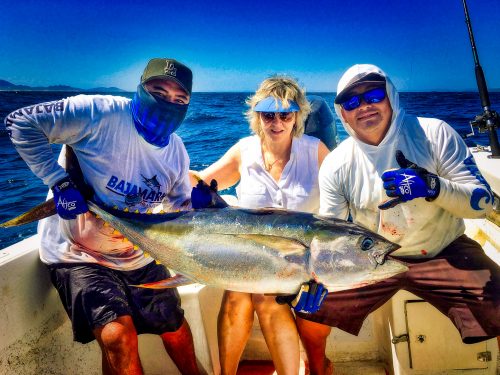
At La Paz and Muertos Bay, fishing has slowed as seasonal cooler temperatures, stronger winds, and currents with rougher water signals the Baja winter is on its way. Picky fish, with scarce bait and uncharacteristically big swells, along with chop and gusty winds are making it harder to fish. The winds will only get stronger, and the usual calm La Paz Bay is getting some big wind-generated rollers that are smashing waves onto the waterfront areas.
There are still some dorado around, although the schools are diminishing. Most days, boats scratched out a catch of one to five dorado per day around 10 pounds or so. Smaller ones were released.
More inshore fish, like triggerfish, snapper, pargo, and cabrilla as well as sierra, jack crevalle, and pompano, increased in the counts as waters cooled, and it became more incumbent to fish closer to the beaches and rocks.
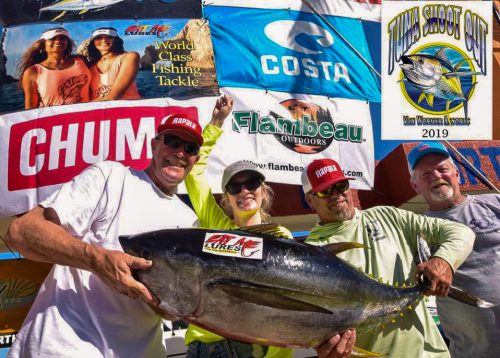
At East Cape, the Van Wormer Resorts Tuna Shoot-Out drew a crowd that only scraped up five yellowfin tuna during the one-day tournament. The chances are that most of those came from the lower limits of East Cape—more like Gordo Banks. Local fishing seems to have slowed as north winds begin, and wind surfers rejoice!
Puerto Los Cabos area banks—Gordo Banks, Iman, San Luis, and some venturing as far as Vinorama—were the go-to spot recently for tournament teams for the recent big game tournaments held in Cabo San Lucas producing large billfish as well as yellowfin and wahoo.
Dorado became very scattered; not many billfish from the standard charters—more sailfish than others—and a higher percentage of anglers preferred to target wahoo or tuna.
Yellowfin tuna were found on the San Luis Bank, drift fishing with various bait, mainly sardina and strips of squid. Yellowfin tuna to over 100 pounds were caught, but most of the tuna hooked into were in the 60- to 90-pound class; no big numbers, but later in the week, this bite did improve—some anglers caught a couple of quality tuna. Only a handful of football-sized yellowfin, most of which were quality grade; they had lots of black skipjack and bonito to use as bait.
Live bait proved best for wahoo.
There isn’t a lot of bottom action being attempted now.
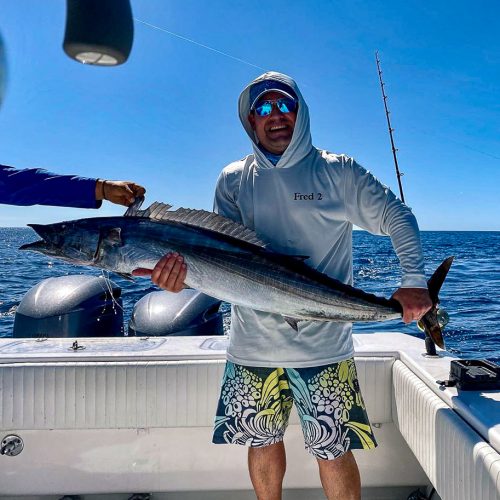
Wahoo, yellowfin tuna, from small to 210 pounds, are a good omen for the WON Tuna jackpot taking place on November 6-9. The billfish scene for stripes, blues and blacks has been good for smaller ones. The largest caught in the recent tournaments was a 577-pound blue.
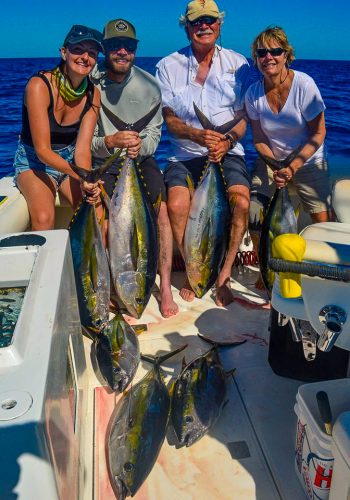
Inshore, the roosterfish, jacks and smaller yellowfin tuna and dorado have been crowd-pleasers.
Gary Graham, That Baja Guy
thatbajaguy@gmail.com
Questions and comments are always welcome.
With more than five decades of fishing experience – from light tackle and fly to offshore billfish – Gary Graham has experienced all aspects of fishing in the Southern California and Baja waters. His observations of species behavior, tackle and techniques are always from his unique perspective, earning him the respect of his peers as well as anglers who eagerly follow his Baja reports and features.
Gary maintained a home at East Cape in Baja Sur for more than 18 years and still spends nearly half of each year exploring the entire peninsula in his self-contained Roadtrek van. He observes everything Baja, from the mysteries of a tide pool on a deserted Baja beach filled with tiny sea creatures to the largest billfish in the sea.

